SEBO Environment
Environmentally friendly - buy your new vacuum with a clean conscience
There's more to being environmentally aware than just looking at energy ratings – a true friend of the environment will ensure their new vacuum is responsibly manufactured too.
Everyone knows to look for efficiency when it comes to buying new appliances for the home, but what about the amount of energy consumed in their production and distribution? Sometimes this can far outweigh the energy used during the entire lifespan of a product. According to research by the Commission on Architecture and the Built Environment (CABE), WWF, and Halifax, 87% of consumers would like their home to be more environmentally friendly. To achieve this, we need to consider the environmental impact of the products we buy right from their very inception, not just once they enter our homes.
Manufactured in Germany, using locally sourced materials and components, every SEBO vacuum cleaner is made to last. This not only reduces waste and uses less resources, it even saves customers money. What is really impressive is the lengths the company will go to ensure every single element of a vacuum’s construction makes minimal impact on the environment. Not only is plastic recycled into new components, but the factory is completely self-sustaining with regards to electricity – and even makes contributions to the national grid when supply exceeds demand. A combined heat and power system recovers virtually 100% of its primary energy source; as well as producing the electricity required to run machinery, the warm air created by its generator is used to heat the warehouse while engine coolant is pumped through the office radiators.
Water resources are also conserved at the SEBO factory. Rainwater (aka brown water) is collected from the roof, then filtered and stored to be used in production and within the factory washrooms, saving the unnecessary use of treated drinking water. The factory and offices are designed to use natural light as much as possible, avoiding artificial lighting and the associated power consumption and working hours are scheduled to make use of daylight hours. This also creates a much better working environment. SEBO have a highly skilled and dedicated workforce and the management of SEBO are very aware of their social responsibility and the huge contribution the commitment and health of their staff make to the quality of SEBO products.
For SEBO, reducing the carbon footprint of a product starts in the initial design process. Part of the design brief is to ensure that they will pack into the smallest possible cartons and that the carton sizes ensure that the maximum number of machines will fit onto a pallet. Most packaging is made from unbleached recycled cardboard with waste paper from the offices being shredded and re-used for packing. Even deliveries are carefully planned to ensure lorries are filled to their maximum capacity and are running as economically as possible


